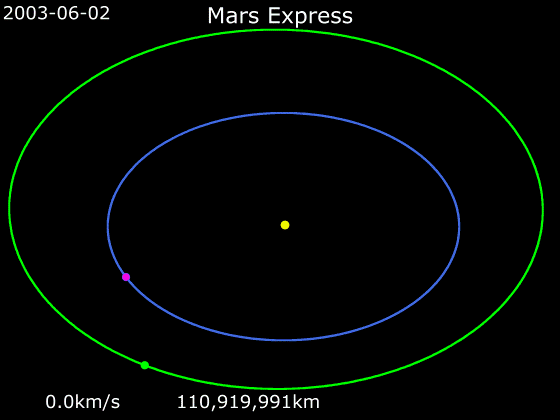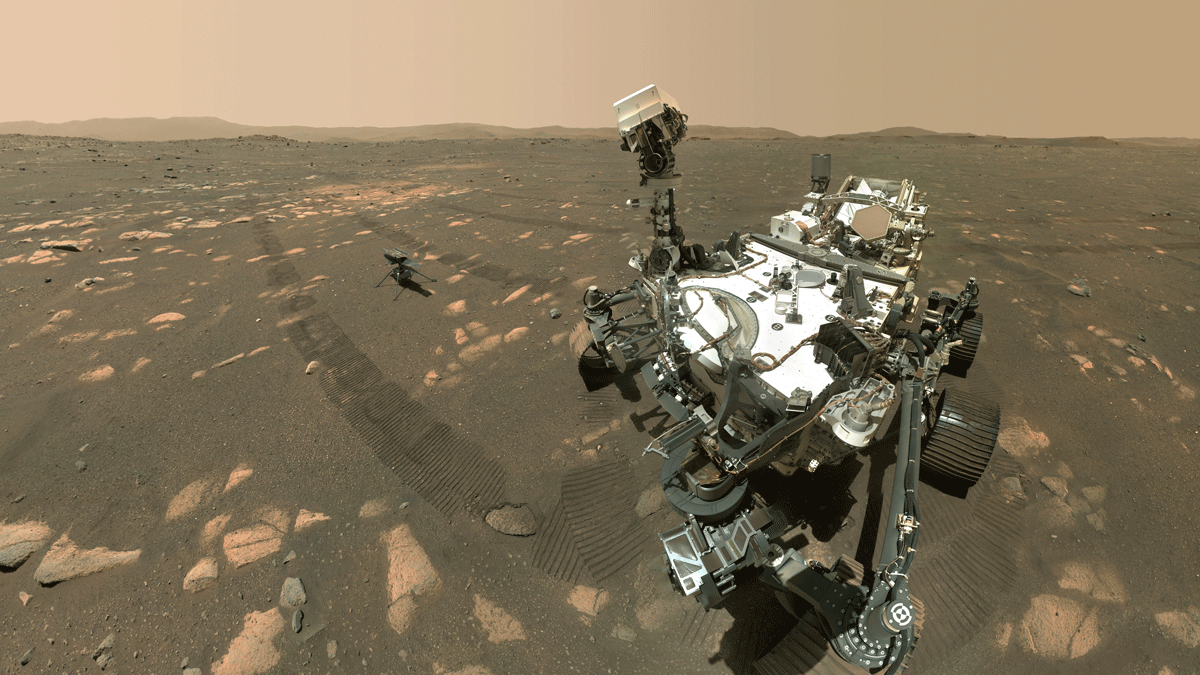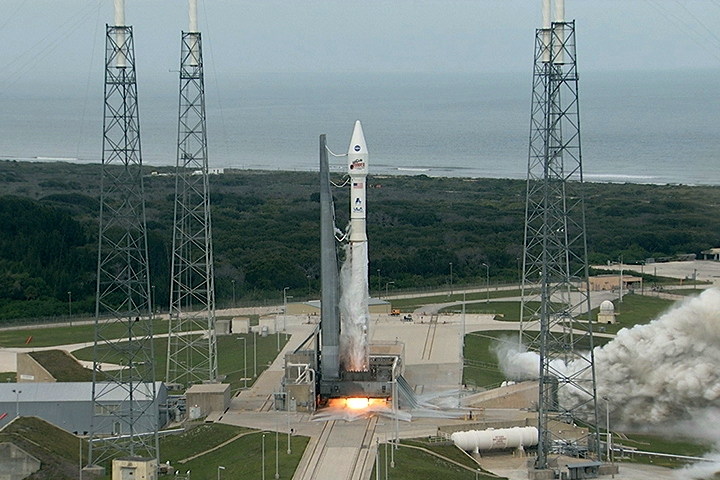|
Satellites Of Mars
The satellites of Mars include : *Non functional but (probably) orbiting: **Viking 1 & 2 orbiter **Mariner 9 **Mars Global Surveyor **Mars 2, 3, 5 **Phobos 2 **Tianwen 1 Deployable Camera 2, CNSA, 2021 *Functional and communicating: **Mars Odyssey (ODY), NASA, 2001 **Mars Express (MEX), ESA, 2003 **Mars Reconnaissance Orbiter (MRO), NASA, 2006 **MAVEN (MVN), NASA, 2013 **Mangalyaan (MOM), India, 2013 **ExoMars Trace Gas Orbiter (TGO), ESA/Roscosmos, 2016 **Emirates Mars Mission (Hope), UAESA, 2021 **Tianwen 1 orbiter, CNSA, 2021 See also * Exploration of Mars - has all the missions including landers * List of missions to Mars This is a list of the 50 spacecraft missions (including unsuccessful ones) relating to the planet Mars, such as orbiters and rovers. Missions ;Mission Type Legend: Mars landing locations There are a number of derelict orbiters around ... - includes future missions References {{reflist * ... [...More Info...] [...Related Items...] OR: [Wikipedia] [Google] [Baidu] |
Viking 1
''Viking 1'' was the first of two spacecraft, along with '' Viking 2'', each consisting of an orbiter and a lander, sent to Mars as part of NASA's Viking program. The lander touched down on Mars on July 20, 1976, the first successful Mars lander in history. ''Viking 1'' operated on Mars for days (over 6 years) or Martian solar days, the longest Mars surface mission until the record was broken by the ''Opportunity'' rover on May 19, 2010. Mission Following launch using a Titan/Centaur launch vehicle on August 20, 1975, and an 11-month cruise to Mars, the orbiter began returning global images of Mars about five days before orbit insertion. The ''Viking 1'' Orbiter was inserted into Mars orbit on June 19, 1976, and trimmed to a 1,513 x 33,000 km, 24.66 h site certification orbit on June 21. Landing on Mars was planned for July 4, 1976, the United States Bicentennial, but imaging of the primary landing site showed it was too rough for a safe landing. The landing was de ... [...More Info...] [...Related Items...] OR: [Wikipedia] [Google] [Baidu] |
Mars Express
''Mars Express'' is a space exploration mission being conducted by the European Space Agency (ESA). The ''Mars Express'' mission is exploring the planet Mars, and is the first planetary mission attempted by the agency. "Express" originally referred to the speed and efficiency with which the spacecraft was designed and built. However, "Express" also describes the spacecraft's relatively short interplanetary voyage, a result of being launched when the orbits of Earth and Mars brought them closer than they had been in about 60,000 years. ''Mars Express'' consists of two parts, the ''Mars Express Orbiter'' and '' Beagle 2'', a lander designed to perform exobiology and geochemistry research. Although the lander failed to fully deploy after it landed on the Martian surface, the orbiter has been successfully performing scientific measurements since early 2004, namely, high-resolution imaging and mineralogical mapping of the surface, radar sounding of the subsurface structure down to ... [...More Info...] [...Related Items...] OR: [Wikipedia] [Google] [Baidu] |
Exploration Of Mars
The planet Mars has been explored remotely by spacecraft. Probes sent from Earth, beginning in the late 20th century, have yielded a large increase in knowledge about the Martian system, focused primarily on understanding its geology and habitability potential. Engineering interplanetary journeys is complicated and the exploration of Mars has experienced a high failure rate, especially the early attempts. Roughly sixty percent of all spacecraft destined for Mars failed before completing their missions and some failed before their observations could begin. Some missions have met with unexpected success, such as the twin Mars Exploration Rovers, '' Spirit'' and '' Opportunity'' which operated for years beyond their specification. Current status , there are three operational rovers on the surface of Mars, the ''Curiosity'' and ''Perseverance'' rovers, both operated by the United States of America space agency NASA, as well as the ''Zhurong'' rover, part of the '' Tianwen-1' ... [...More Info...] [...Related Items...] OR: [Wikipedia] [Google] [Baidu] |
Emirates Mars Mission
, ''Al-Amal'') , manufacturer = , dry_mass = 550 kg , launch_mass = 1350 kg, including800 kg hydrazine fuel1,350 kg , payload_mass = , dimensions = 2.37 m × 2.90 m , power = 1800 watts from two solar panels , launch_date = 19 July 2020, 21:58:14 UTC , launch_rocket = H-IIA , launch_site = Tanegashima, LP-1 , launch_contractor = Mitsubishi Heavy Industries , disposal_type = , deactivated = , destroyed = , last_contact = , orbit_periapsis = , orbit_apoapsis = , orbit_inclination = Supersynchronous orbit , orbit_period = 55 hours , apsis = areon , interplanetary = , instruments = , insignia = Hope Mars Mission logo.svg , insignia_caption = Hope Mars mission logo , insignia_size = 200px The Emirates Mars Mission ( ar, مشروع الإمارات لاستكشاف المريخ) (translit: mašrū' al-Imārāt l-� ... [...More Info...] [...Related Items...] OR: [Wikipedia] [Google] [Baidu] |
ExoMars Trace Gas Orbiter
The ExoMars Trace Gas Orbiter (TGO or ExoMars Orbiter) is a collaborative project between the European Space Agency (ESA) and the Russian Roscosmos agency that sent an atmospheric research orbiter and the ''Schiaparelli'' demonstration lander to Mars in 2016 as part of the European-led ExoMars programme. The Trace Gas Orbiter delivered the ''Schiaparelli'' lander on 16 October 2016, which crashed on the surface due to a premature release of the parachute. The orbiter began aerobraking in March 2017 to lower its initial orbit of . Aerobraking concluded on 20 February 2018 when a final thruster firing resulted in an orbit of . Additional thruster firings every few days raised the orbiter to a circular "science" orbit of , which was achieved on 9 April 2018. A key goal is to gain a better understanding of methane () and other trace gases present in the Martian atmosphere that could be evidence for possible biological activity. The programme will follow with the ''Kazachok'' la ... [...More Info...] [...Related Items...] OR: [Wikipedia] [Google] [Baidu] |
Mangalyaan
The Mars Orbiter Mission (MOM), also called ''Mangalyaan'', was a space probe orbiting Mars since 24 September 2014. It was launched on 5 November 2013 by the Indian Space Research Organisation (ISRO). It was India's first interplanetary mission and it made ISRO the fourth space agency to achieve Mars orbit, after Roscosmos, NASA, and the European Space Agency. It made India the first Asian nation to reach Martian orbit and the first nation in the world to do so on its maiden attempt. The Mars Orbiter Mission probe lifted-off from the First Launch Pad at Satish Dhawan Space Centre ( Sriharikota Range SHAR), Andhra Pradesh, using a Polar Satellite Launch Vehicle (PSLV) rocket C25 at 09:08 UTC on 5 November 2013. The launch window was approximately 20 days long and started on 28 October 2013. The MOM probe spent about a month in Earth orbit, where it made a series of seven apogee-raising orbital manoeuvres before trans-Mars injection on 30 November 2013 ( UTC). After ... [...More Info...] [...Related Items...] OR: [Wikipedia] [Google] [Baidu] |
MAVEN
MAVEN is an American spacecraft orbiting Mars to study the loss of its atmospheric gases to space, providing insight into the history of the planet's climate and water. The spacecraft name is an acronym for "Mars Atmosphere and Volatile Evolution" and also a word that means "a person who has special knowledge or experience; an expert". MAVEN was launched on an Atlas V rocket from Cape Canaveral Air Force Station, Florida, on 18 November 2013 UTC and went into orbit around Mars on 22 September 2014 UTC. The mission is the first by NASA to study the Mars atmosphere. The probe is analyzing the planet's upper atmosphere and ionosphere to examine how and at what rate the solar wind is stripping away volatile compounds. The principal investigator for the mission is Shannon Curry at the University of California, Berkeley. She took over from Bruce Jakosky of the Laboratory for Atmospheric and Space Physics at the University of Colorado Boulder, who proposed and led the mission unti ... [...More Info...] [...Related Items...] OR: [Wikipedia] [Google] [Baidu] |
Mars Reconnaissance Orbiter
''Mars Reconnaissance Orbiter'' (MRO) is a spacecraft designed to study the geology and climate of Mars, provide reconnaissance of future landing sites, and relay data from surface missions back to Earth. It was launched on August 12, 2005, and reached Mars on March 10, 2006. In November 2006, after five months of aerobraking, it entered its final science orbit and began its primary science phase. The cost to develop and operate MRO through the end of its prime mission in 2010 was . The spacecraft continues to operate at Mars, far beyond its intended design life. Due to its critical role as a high-speed data-relay for ground missions, NASA intends to continue the mission as long as possible, at least through the late 2020s. Pre-launch After the twin failures of the '' Mars Climate Orbiter'' and the Mars Polar Lander missions in 1999, NASA reorganized and replanned its Mars Exploration Program. In October 2000, NASA announced its reformulated Mars plans, which reduced the ... [...More Info...] [...Related Items...] OR: [Wikipedia] [Google] [Baidu] |
Mars Odyssey
''2001 Mars Odyssey'' is a robotic spacecraft orbiting the planet Mars. The project was developed by NASA, and contracted out to Lockheed Martin, with an expected cost for the entire mission of US$297 million. Its mission is to use spectrometers and a thermal imager to detect evidence of past or present water and ice, as well as study the planet's geology and radiation environment. It is hoped that the data ''Odyssey'' obtains will help answer the question of whether life existed on Mars and create a risk-assessment of the radiation that future astronauts on Mars might experience. It also acts as a relay for communications between the ''Curiosity'' rover, and previously the Mars Exploration Rovers and ''Phoenix'' lander, to Earth. The mission was named as a tribute to Arthur C. Clarke, evoking the name of his and Stanley Kubrick's 1968 film '' 2001: A Space Odyssey''. ''Odyssey'' was launched April 7, 2001, on a Delta II rocket from Cape Canaveral Air Force Station, an ... [...More Info...] [...Related Items...] OR: [Wikipedia] [Google] [Baidu] |
Viking 2
The ''Viking 2'' mission was part of the American Viking program to Mars, and consisted of an orbiter and a lander essentially identical to that of the '' Viking 1'' mission. ''Viking 2'' was operational on Mars for sols ( days; '). The ''Viking 2'' lander operated on the surface for days, or sols, and was turned off on April 12, 1980, when its batteries failed. The orbiter worked until July 25, 1978, returning almost 16,000 images in 706 orbits around Mars. Mission profile The craft was launched on September 9, 1975. Following launch using a Titan/Centaur launch vehicle and a 333-day cruise to Mars, the ''Viking 2'' Orbiter began returning global images of Mars prior to orbit insertion. The orbiter was inserted into a 1500 x 33,000 km, 24.6 h Mars orbit on August 7, 1976, and trimmed to a 27.3 h site certification orbit with a periapsis of 1499 km and an inclination of 55.2 degrees on August 9. The orbiter then began taking photographs of candidate landing sit ... [...More Info...] [...Related Items...] OR: [Wikipedia] [Google] [Baidu] |
Tianwen 1
-1 (TW-1; zh, t=, s=, l=' Heavenly Questions') is an interplanetary mission by the China National Space Administration (CNSA) which sent a robotic spacecraft to Mars, consisting of 6 spacecraft: an orbiter, two deployable cameras, lander, remote camera, and the ' rover. The spacecraft, with a total mass of nearly five tons, is one of the heaviest probes launched to Mars and carries 14 scientific instruments. It is the first in a series of planned missions undertaken by CNSA as part of its Planetary Exploration of China program. The mission's scientific objectives include: investigation of Martian surface geology and internal structure, search for indications of current and past presence of water, and characterization of the space environment and the atmosphere of Mars. The mission was launched from the Wenchang Spacecraft Launch Site on 23 July 2020 on a Long March 5 heavy-lift launch vehicle. After seven months of transit through the inner Solar System, the spacecraft en ... [...More Info...] [...Related Items...] OR: [Wikipedia] [Google] [Baidu] |
Phobos 2
''Phobos 2'' was the last space probe designed by the Soviet Union. It was designed to explore the moons of Mars, Phobos and Deimos. It was launched on 12 July 1988, and entered orbit on 29 January 1989. ''Phobos 2'' operated nominally throughout its cruise and Mars orbital insertion phases on 29 January 1989, gathering data on the Sun, interplanetary medium, Mars, and Phobos. ''Phobos 2'' investigated Mars surface and atmosphere and returned 37 images of Phobos with a resolution of up to 40 meters. Shortly before the final phase of the mission, during which the spacecraft was to approach within of Phobos' surface and release two landers (One, a mobile , the other, a stationary platform) contact with ''Phobos 2'' was lost. The mission ended when the spacecraft signal failed to be successfully reacquired on 27 March 1989. The cause of the failure was determined to be a malfunction of the on-board computer. Background The intent to carry out a mission with Phobos as the targ ... [...More Info...] [...Related Items...] OR: [Wikipedia] [Google] [Baidu] |



.png)





.jpg)